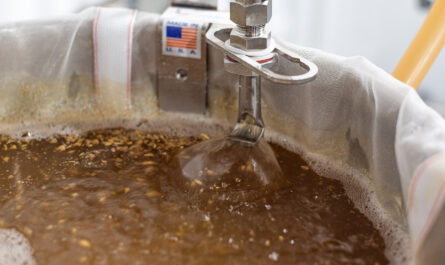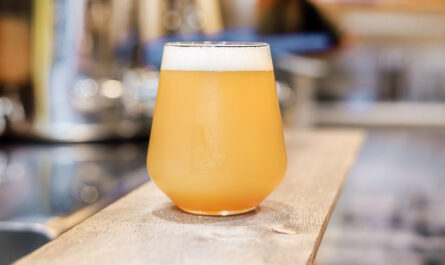A hydrometer is one of a brewer’s most important tools—as least if you want to calculate the alcohol content of your homebrew. A hydrometer is a fairly straightforward tool to use, there are just a few tips you should know to ensure you’re getting accurate results.
Quick Links
ABV calculator | Temperature adjustment calculator
How Does It Work? Quick and Dirty Explanation
A hydrometer measures a liquids specific gravity (density compared to water). In brewing, a hydrometer will measure the original sugar density in your wort (original gravity OG or potential alcohol) and then how much sugar is no longer present after the yeast has converted it into alcohol (final gravity FG). With these two readings, you can estimate your beer’s ABV.
Before we get into anything else, you should be aware of hydrometer calibration and temperature correction. Both of these items need to be addressed for accurate results!

How to Calibrate Your Hydrometer
This is something I failed to do when I first started because I didn’t know it was a thing. True hydrometer calibration is basically learning how accurate your hydrometer is, to begin with, and applying that variance for the rest of your brewing life to every reading for the most accurate results. Hydrometers are usually calibrated at either 60°F or 68°F. You can find this number either on your hydrometer or with the instructions.
To calibrate your thermometer:
- Fill the hydrometer tube up to about 2 inches from the top with distilled or reverse osmosis RO water at your hydrometer’s calibration temp (60°F or 68°F).
- Insert the hydrometer. Give it a spin to shake off any bubbles. Wait for the hydrometer to come to a complete stop and take a reading.
- The hydrometer should read 1.000 if it’s “perfect”. If it’s higher or lower by a few points, you’ll need to note the variance. For example, if the reading is .998, your hydrometer is reading lower by .002. Record this and add .002 to all gravity readings going forward.
Hydrometer Temperature Correction
Depending on the temperature of your wort/beer, you may have to adjust the hydrometer reading to compensate for the temperature. If your hydrometer is calibrated at 68°F and your wort/beer is 68°F, then no correction is necessary. You can do this with math/a chart or you can an online calculator.
Here is a handy temperature adjustment calculator. The calibration field is where you should enter your hydrometer’s factory calibration temp.
When to Take Original Gravity Reading
I take my OG just before pitching yeast. DO NOT take an OG reading after you have already pitched your yeast. Remember to sanitize anything you put in your fermenter for samples etc. When I first started out I used a turkey baster or glass measuring cup to fill my hydrometer tube. Now I draw off samples from my fermenters spigot which is super handy.
How to Take a Gravity Reading
- Fill the hydrometer tube up to about 2 inches from the top.
- Insert the hydrometer. Give it a spin to shake off any bubbles. Wait for the hydrometer to come to a complete stop (this is also incredibly satisfying).
- Read the hydrometer at the meniscus (the lowest point where the wort intersects the markings).
- Record this number as your OG. Note, most hydrometers are marked in increments of 0.002. Depending on your recipe, this number will be around 1.1050-1.060.
- Adjust gravity reading for temperature if necessary.
Calculating Your Beer’s ABV
Once you have both your temperature-corrected OG and FG, you can calculate your homebrew’s ABV. You can use a really simple formula below or once again you can use this ABV calculator to do it for you.
Formula: Final Gravity-Original GravityX131.25=ABV




